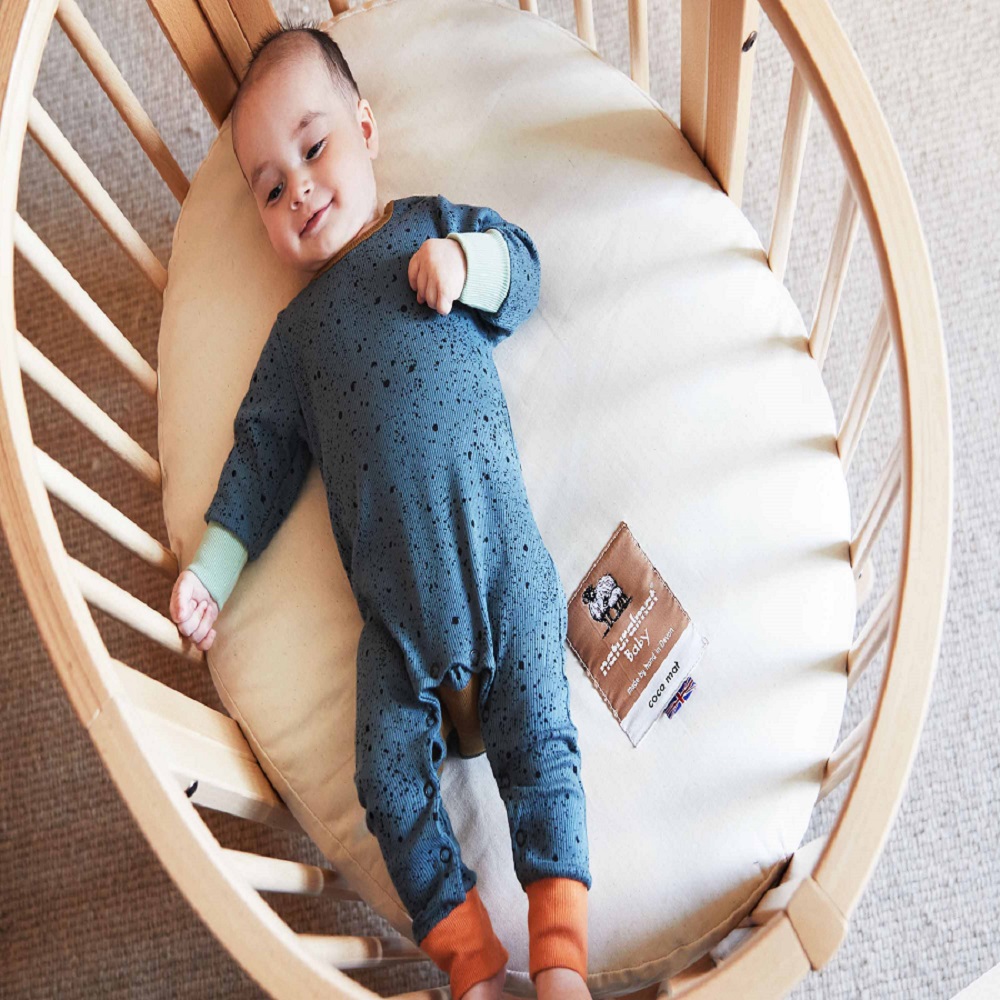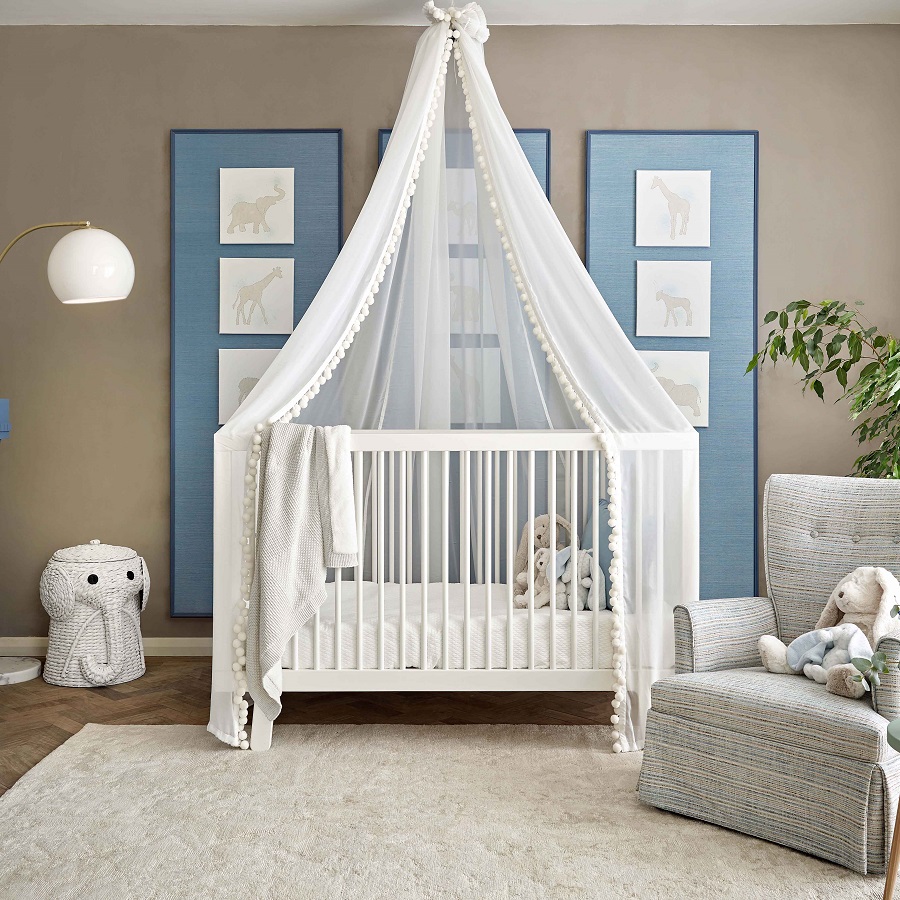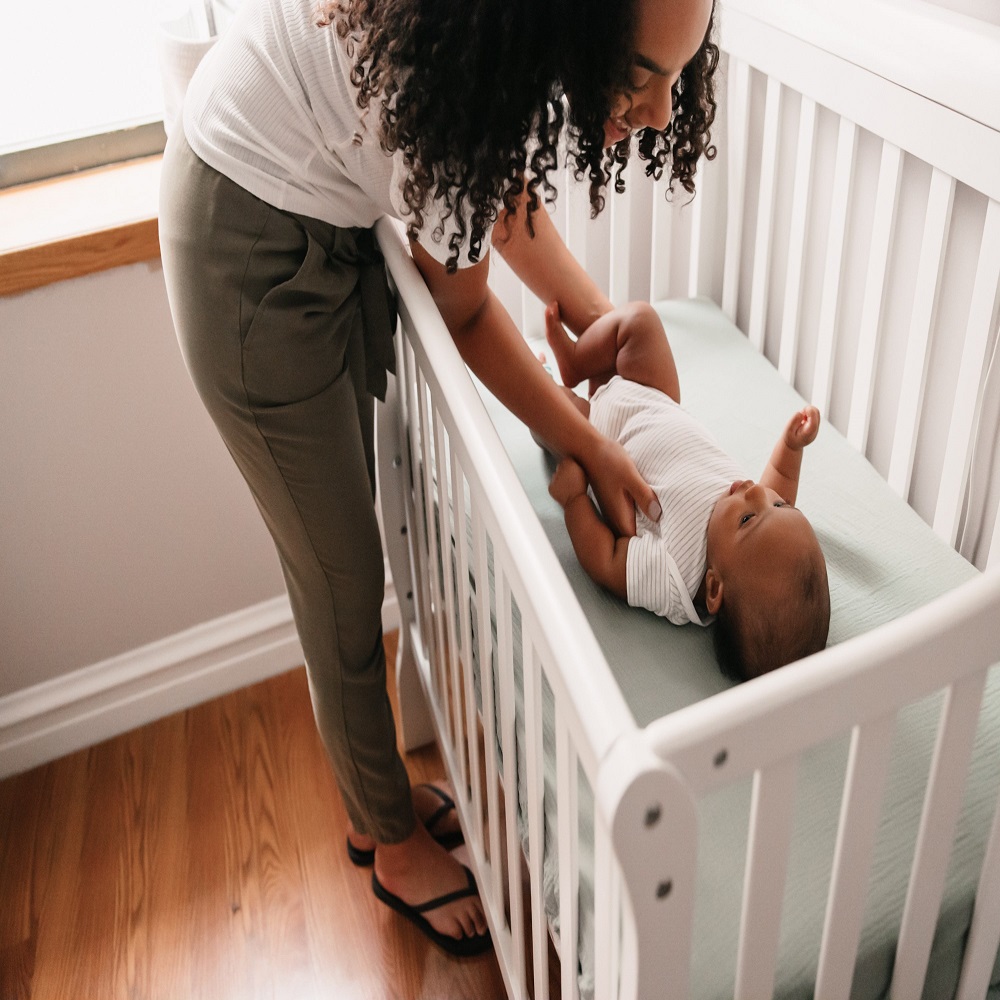Important Safety Standards for Baby Beds
When selecting a bed for your baby, safety should be your top priority. To ensure the highest safety levels, it’s vital to be informed about the important safety standards that govern baby beds. Here are the key standards to keep in mind:
- Compliance with Consumer Product Safety Commission (CPSC): The CPSC sets guidelines for baby beds to reduce risks of injury or death. Always check that the bed for your baby meets or exceeds these regulations.
- ASTM International Standards: ASTM provides a set of voluntary standards that manufacturers often follow. Look for baby beds that are ASTM certified for added assurance of safety.
- Slats and Spacing: The distance between the slats of the crib should be no more than 2 3/8 inches apart. This prevents the baby’s head from getting trapped.
- Sturdy Construction: A baby bed must not have any loose or missing hardware or components. It should feel stable and secure to the touch.
- Non-toxic Materials: Ensure all materials in the baby bed, including paint and finishes, are non-toxic. Babies have sensitive systems and are prone to chewing on surfaces.
- Adjustable Mattress Heights: Beds for babies often come with adjustable mattress heights. This feature allows the bed to grow with your baby and can prevent escape attempts as they become more mobile.
- No Drop-Side Rails: Since 2011, drop-side cribs have been banned in the United States due to safety concerns. Always opt for a bed with fixed sides.
- Corner Posts: Corner posts should not extend more than 1/16th of an inch above the frame and end panels to prevent clothing from getting caught.
By ensuring that the bed for your baby meets these important safety standards, you can create a sleep environment that is both comfortable and secure. Always refer to the most current safety guidelines, as standards can change. Remember, optimal safety also requires regular checks and maintenance of the baby bed over time.

Types of Baby Beds: Pros and Cons
When it comes to choosing a bed for your baby, there are multiple types available, each with its own set of advantages and drawbacks. Understanding these can help parents make the best choice for their child’s safety and comfort.
Standard Cribs
Pros:
- Long-lasting: Standard cribs are durable and can often convert to toddler beds.
- Regulated Safety: They meet strict safety standards, offering peace of mind.
Cons:
- Size: They can be large, taking up more space in a room.
- Fixed Location: Once assembled, they’re not easy to move around.
Bassinets
Pros:
- Portability: Bassinets are lightweight and can easily move from one place to another.
- Cozy Size: Their smaller size is perfect for newborns and fits well next to parents’ beds.
Cons:
- Short-term Use: They are only suitable for the initial months as babies quickly outgrow them.
- Varying Standards: Safety regulations may not be as comprehensive as for standard cribs.
Portable Cribs
Pros:
- Travel-friendly: They are designed for easy transport and are great for families that travel frequently.
- Flexible Placement: They can be set up in a variety of locations within the home.
Cons:
- Smaller Size: May be less sturdy and have a shorter lifespan than standard cribs.
- Complex Set-Up: Some models may be difficult to fold and unfold.
Convertible Cribs
Pros:
- Adaptability: Convertible cribs can change into multiple bed types as your child grows.
- Cost-Effective: They can be a long-term investment, eliminating the need to buy multiple beds.
Cons:
- Initial Cost: The upfront cost is often higher due to their versatility.
- Complex Assembly: Changing the bed’s configuration can be time-consuming.
Choosing the right type of bed for your baby requires considering both the benefits and limitations of each option. By evaluating these pros and cons, you’ll be able to select a baby bed that not only adheres to the important safety standards discussed earlier but also suits your family’s specific needs. Always remember to confirm that any bed for your baby meets the latest safety guidelines.

Features to Look for in a Safe Baby Bed
When picking a bed for your baby, certain features must be on your checklist to ensure utmost safety and comfort. These traits not only comply with safety regulations but also contribute to the overall well-being of your baby during sleep. Here’s what to look for:
- Solid Frame: Check that the baby bed has a robust and reliable frame that doesn’t wobble.
- Fixed Sides: Ensure the crib has secure, immovable sides to prevent any accidental falls.
- Certified Materials: Look for beds made with certified, non-toxic materials to keep your baby safe from harmful chemicals.
- Snug Mattress Fit: A mattress should fit snugly within the crib, with no gaps around the edges where a baby could become trapped.
- Breathable Mattress: Choose a firm mattress with good airflow to lower the risk of suffocation and provide a safe sleeping surface.
- No Sharp Edges or Protrusions: Every part of the bed should be smooth with no sharp corners or parts sticking out.
- Teething Rails: Rails covered with a protective material can prevent damage to the bed and protect your baby’s teeth.
- Compliance Labels: Always check for a label indicating the bed meets current safety standards.
Selecting the right bed for your baby involves thoughtful consideration of these features. Ensure the baby bed is not only safe and sturdy but also free from elements that could pose a risk. Above all, the right bed will foster a secure environment for your baby to rest and grow.
Age-Appropriate Bed Selection
Choosing the right bed for your baby also depends on their age and size. As babies grow, their needs change, and so should their sleeping arrangements. Let’s look at how to pick an age-appropriate bed for your little one.
- Newborn to 6 Months: A bassinet or a co-sleeper is ideal for this stage. They’re small, cozy, and can be placed close to your bed for easy night-time care.
- 6 Months to 3 Years: Transition to a crib as your baby begins to move and explore. Cribs provide more space and ensure safety with fixed sides and slat spacing.
- 3 Years and Up: Consider a toddler bed when your child outgrows the crib. These beds are low to the ground and often have guardrails to prevent falls.
- Adjustable Features: Look for a crib that can convert to a toddler bed. This can save you time and money as your child grows.
Remember that proper bed selection is not just about age but also about safety and comfort. Always ensure that the bed meets safety standards and fits your baby’s developmental needs. With each transition, check the condition and fit of the mattress and bed to ensure ongoing safety.
Best Practices for Baby Bed Placement
When setting up a bed for your baby, positioning is crucial for safety and convenience. Here are best practices for baby bed placement:
- Stable Surface: Place the bed on a solid, level surface away from windows and heaters.
- Away from Cords: Keep the bed away from blinds and curtain cords to prevent strangulation hazards.
- Safe Distance from Walls: Ensure there is enough space around the bed to avoid trapping or suffocation risks.
- Low Traffic Area: Choose a quiet spot with minimal disturbances for better sleep.
- Clear of Objects: Make sure no toys, pillows, or loose bedding are in the bed that could cause suffocation.
- Monitor Accessibility: Position the bed within easy reach for monitoring and comforting your baby during the night.
Proper placement of your baby’s bed is just as important as the type and features of the bed itself. Keep these simple guidelines in mind to create a secure and restful environment for your baby.
Common Baby Bed Safety Myths Debunked
When setting up a bed for your baby, it’s easy to encounter myths. Certain common beliefs may not be accurate, and it’s important to know the facts. Here we debunk a few myths for clarity:
- Myth: Soft beds are best for babies: Actually, a firm mattress is safer. It reduces the risk of SIDS (Sudden Infant Death Syndrome).
- Myth: Sleep positioners ensure safety: These are not recommended. They can pose suffocation risks to infants.
- Myth: Crib bumpers prevent injuries: Bumpers can cause suffocation or entrapment. They are not safe and should be avoided.
- Myth: Second-hand cribs are fine: Not always. Older cribs might not meet current safety standards. Always check for up-to-date compliance.
- Myth: If it’s for sale, it must be safe.: This is not always true. Products can be recalled or become outdated. Do your research before buying.
Understanding the truth behind these myths helps you create a safer sleep environment for your baby. Always base your decisions on proven safety guidelines and current standards. Stay informed and skeptical of assumptions that do not align with modern safety recommendations for the best bed for your baby.
Tips for Transitioning to a Toddler Bed
Transitioning your little one to a toddler bed is a big step. Here’s how to make that change smooth and safe.
- Timing is Key: Start when your child shows signs of readiness, not before. Look for cues like climbing out of the crib or asking for a “big kid bed.”
- Safety Rails: To prevent falls, ensure the new bed has safety rails. They provide a secure barrier.
- Familiar Bedding: Use sheets and blankets from the crib for a sense of comfort and continuity.
- Bedtime Routine: Keep the same bedtime routine to help your child adjust to the new bed.
- Discuss the Transition: Talk to your child about the change. Explain they’re growing up and need a new bed.
- Choose the Right Bed: Select a bed that’s low to the ground and fits your child’s proportions. Confirm that it meets safety standards.
- Placement Matters: Position the toddler bed in the same spot as the crib, if possible. Familiarity helps ease the transition.
- Involve Your Child: Let them pick out bedding or a special pillow. This can make them excited about their new bed.
- Smooth Transition: If needed, start with naps in the toddler bed before switching overnight.
- Stay Consistent: Once the switch is made, don’t go back to the crib. This helps solidify the new sleeping space.
Making the move to a toddler bed is a milestone in your child’s development. By following these tips, you can ensure a safe and comfortable transition for your baby. It fosters independence and helps your child feel secure in their new bed for baby.
